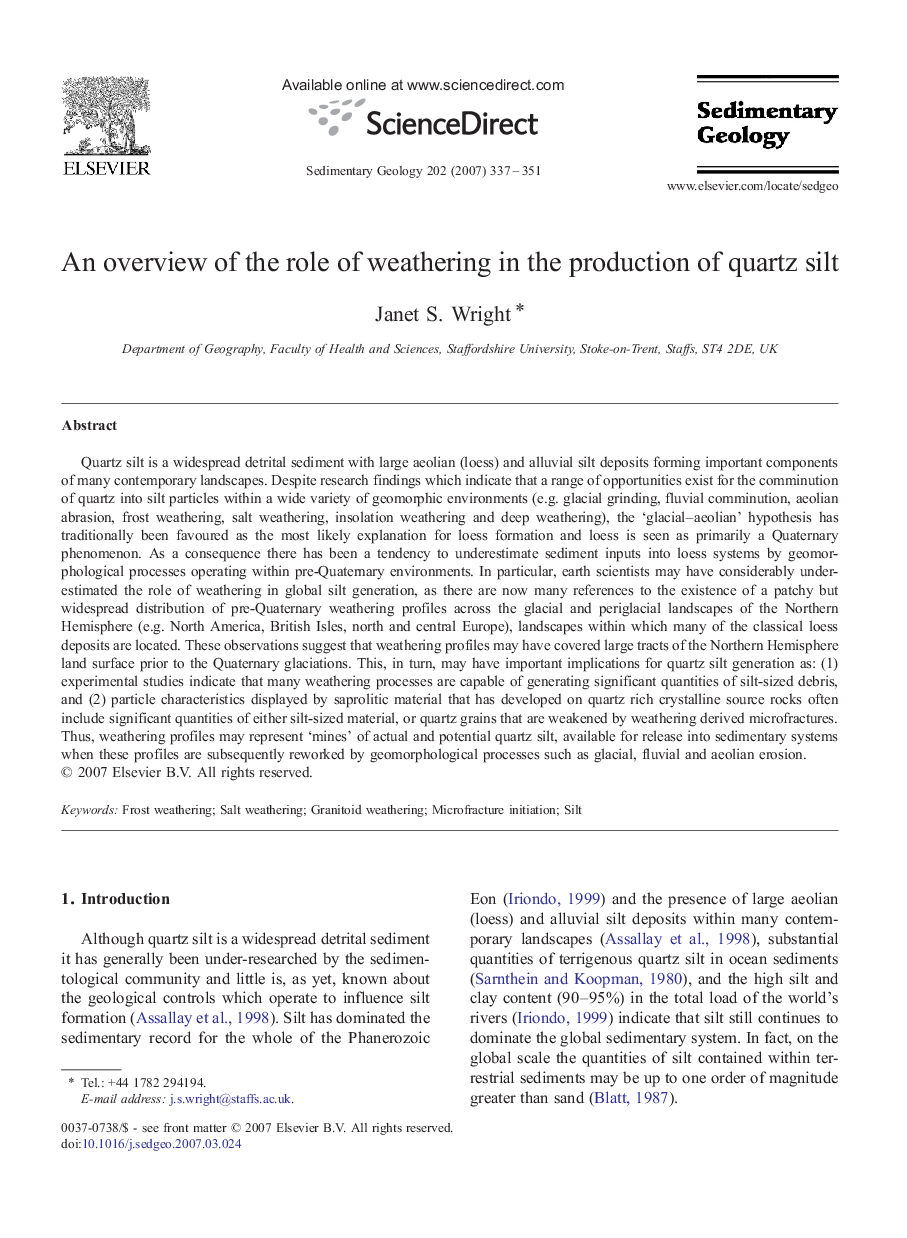| Article ID | Journal | Published Year | Pages | File Type |
|---|---|---|---|---|
| 4690735 | Sedimentary Geology | 2007 | 15 Pages |
Quartz silt is a widespread detrital sediment with large aeolian (loess) and alluvial silt deposits forming important components of many contemporary landscapes. Despite research findings which indicate that a range of opportunities exist for the comminution of quartz into silt particles within a wide variety of geomorphic environments (e.g. glacial grinding, fluvial comminution, aeolian abrasion, frost weathering, salt weathering, insolation weathering and deep weathering), the ‘glacial–aeolian’ hypothesis has traditionally been favoured as the most likely explanation for loess formation and loess is seen as primarily a Quaternary phenomenon. As a consequence there has been a tendency to underestimate sediment inputs into loess systems by geomorphological processes operating within pre-Quaternary environments. In particular, earth scientists may have considerably underestimated the role of weathering in global silt generation, as there are now many references to the existence of a patchy but widespread distribution of pre-Quaternary weathering profiles across the glacial and periglacial landscapes of the Northern Hemisphere (e.g. North America, British Isles, north and central Europe), landscapes within which many of the classical loess deposits are located. These observations suggest that weathering profiles may have covered large tracts of the Northern Hemisphere land surface prior to the Quaternary glaciations. This, in turn, may have important implications for quartz silt generation as: (1) experimental studies indicate that many weathering processes are capable of generating significant quantities of silt-sized debris, and (2) particle characteristics displayed by saprolitic material that has developed on quartz rich crystalline source rocks often include significant quantities of either silt-sized material, or quartz grains that are weakened by weathering derived microfractures. Thus, weathering profiles may represent ‘mines’ of actual and potential quartz silt, available for release into sedimentary systems when these profiles are subsequently reworked by geomorphological processes such as glacial, fluvial and aeolian erosion.
